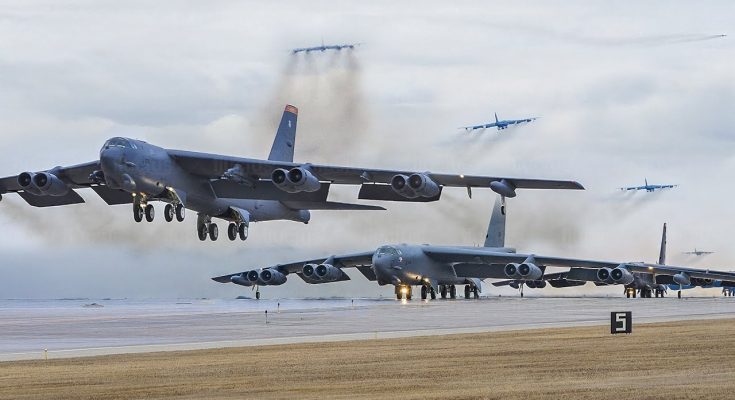Starting up a massive B-52 Stratofortress for an emergency takeoff is a complex and high-stakes process that demands precision, quick decision-making, and an acute sense of urgency. This iconic bomber, designed to carry out long-range missions, often relies on its four powerful turbofan engines and advanced systems to lift off in challenging conditions, and when an emergency arises, every second counts. The process is fraught with tension, a mix of technical challenges and the critical need for speed.
The Pre-Start Chaos
Once the call for an emergency takeoff is issued, the crew’s preparation begins immediately. The pilot, co-pilot, and flight engineers move with urgency, each knowing their specific roles. The cockpit is a sea of flashing lights, warning buzzers, and alarm sounds—each an indication of either a malfunction or an essential step that must be taken quickly. Communication between the crew is crucial, as they coordinate to ensure that the aircraft will be ready for immediate launch, despite the intimidating complexity of the B-52’s systems.
Igniting the Engines
The most dramatic part of the startup process begins with igniting the B-52’s engines. The aircraft’s four turbofan engines, which each produce 17,000 pounds of thrust, are the heart of its ability to perform under extreme conditions. These engines don’t start with the simple push of a button; instead, it requires a methodical process involving a series of checks and switches.
To begin the engine start-up sequence, the crew checks critical systems like the battery voltage, auxiliary power units (APU), and hydraulic systems. These must all be functioning correctly before the engines can even be ignited. The APU provides the necessary power to start the engines when they are in a “cold” state, so it must be up and running before the ignition sequence begins.
With the APU running, the crew initiates the engine start-up, typically beginning with one engine at a time. The process involves starting the engines using air or electrical power, spinning the turbines to their minimum required speed before fuel is introduced. The engine ignites as the fuel and air mix within the combustion chamber, a potentially volatile event if not handled precisely. Any delay in fuel flow or malfunction in the ignition system could cause engine failure, making the task even more tense and dangerous. If one engine fails to ignite or doesn’t perform correctly, the crew quickly switches to a backup plan, often involving an alternate engine start sequence or reliance on other systems.
Emergency Systems Activation
As the engines spool up and the B-52’s systems come online, the crew must also ensure the aircraft’s emergency systems are functioning. These systems include fire suppression units, navigation equipment, and communication systems, all of which must be verified in a matter of minutes. Crew members check the functionality of the flight instruments, making sure everything from the radar to the altimeter is working as intended.
The Rush for Takeoff
With the engines roaring to life, the B-52’s massive frame starts to shake and hum with raw power. The aircraft is now ready for takeoff. The flight crew engages the throttle, and the bomber begins its roll down the runway, heavy and formidable but surprisingly agile. The emergency takeoff requires flawless synchronization and speed, as there is little margin for error—any mistake could lead to catastrophic consequences.
In these high-pressure moments, every crew member has their own role to ensure the aircraft reaches takeoff speed without incident. The co-pilot manages the communication with air traffic control and adjusts the flaps and throttles, while the pilot maintains strict control over the flight path. As the B-52 surges forward, the crew prepares for the eventual climb into the skies.
In the end, starting up a B-52 for an emergency takeoff isn’t just about engines and systems—it’s a terrifying, calculated ballet of technology and human skill under immense pressure. Every action is magnified in importance, and there is little room for error. But once airborne, the B-52 is a symbol of raw power, ready to fulfill its mission with deadly precision.



